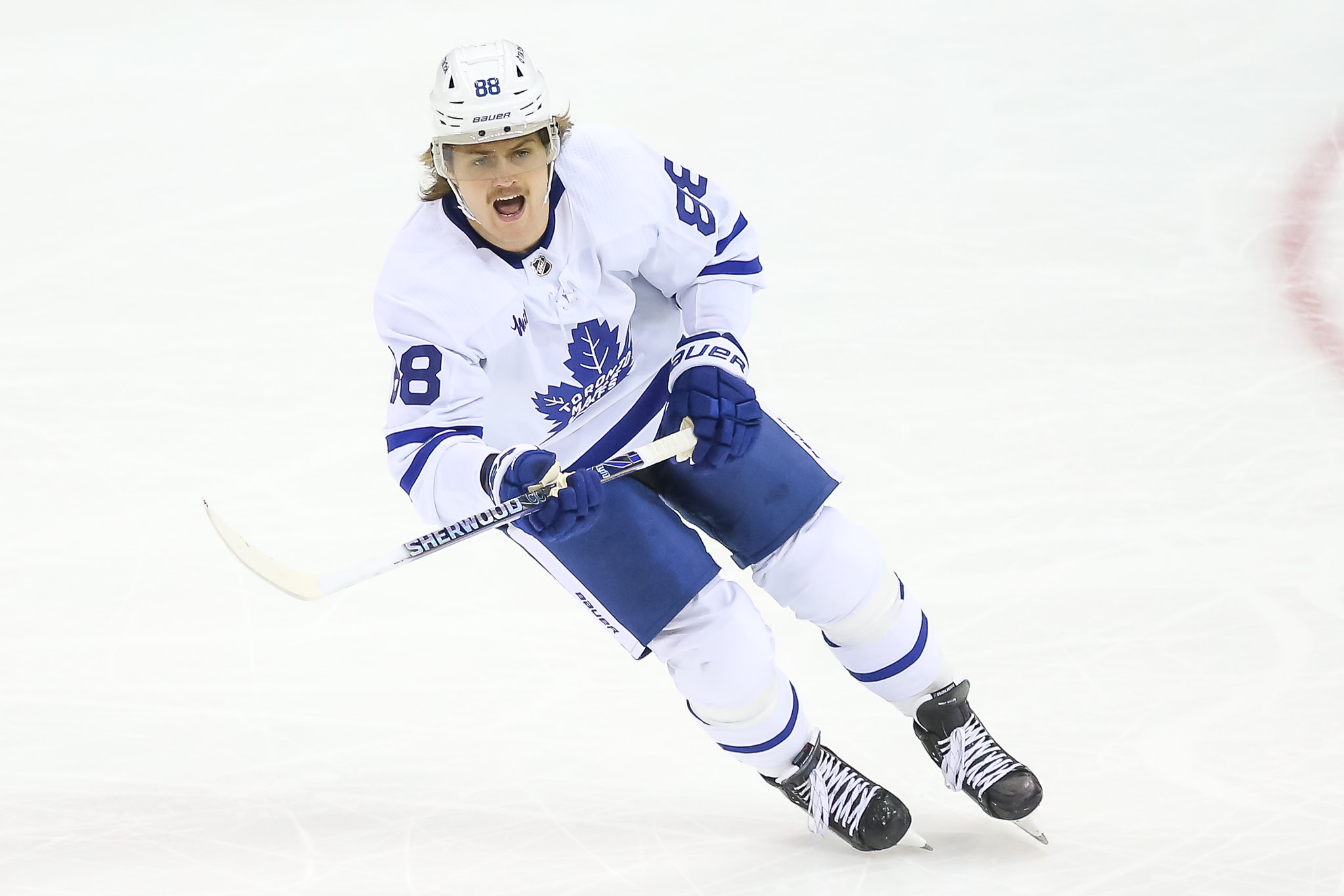For fans of the Toronto Maple Leafs who just witnessed the Alex DeBrincat trade to the Detroit Red Wings for what many see as an underwhelming return, don’t panic if your first thought is that any trade sending William Nylander to another destination is also going to wind up in an underwhelming return for the Maple Leafs and new GM Brad Treliving. Also, don’t get ahead of yourself if you’re thinking that the $7.875 million deal DeBrincat signed in Detroit will be anything similar to Nylanders’ next contract.
There are some similarities between the two players but their situations are different. Both are worth giving up a number of assets to acquire, they’ve been making roughly the same money for the past few seasons, and both were asking for roughly the same on an extension (DeBrincat’s settled for much less but his ask was rumored to be not far off). But, DeBrincat’s situation and Nylander’s are not the same.
The Similarities in the Situations
Both DeBrincat and Nylander are/were struggling to arrange deals with their respective teams. In DeBrincat’s case, he had no intention of signing a long-term deal with the Senators and Sens GM Pierre Dorion felt there was little choice but to trade him, even though he publicly said he’d welcome him back to the team on a one-year deal if a trade wasn’t there. Meanwhile, reports are surfacing that Nylander’s camp and the Maple Leafs are far apart in terms of his salary per season if the player is going to stay long-term.

DeBrincat and Nylander are equally skilled forwards with matching production rates. Both are top-six players and able to play with the best of the best. Both are right-shot right-wingers who produce. Nylander has 430 points in 521 NHL games (0.825 PPG) and DeBrincat has 373 points in 450 NHL games (0.829 PPG). DeBrincat is a touch younger which explains why Nylander essentially has close to one season more under his belt.
Both were being paid around the same as Nylander comes in at $6,962,366, while DeBrincat had just finished his current contract at an annual rate of $6.4 million.
DeBrincat Was RFA Who Was Never Going Anywhere But Detroit
The biggest difference between these two players was/is their respective situations. As a restricted free agent, DeBrincat had limited leverage. The Senators filed for salary arbitration, seeking a reduction from his previous $9 million salary. If successful, it could have resulted in a one-year contract at $7.65 million for the upcoming season. At the same time, DeBrincat goes to the Red Wings, the place he always wanted to go.
Bruce Garrioch of the Ottawa Sun says that Sens GM Pierre Dorion had trade conversations with the New York Islanders, Dallas Stars, and Anaheim Ducks, but it was DeBrincat who steered the ship toward Detroit, where he was ultimately going to sign as a free agent in a year’s time. Steve Yzerman wasn’t going to trade for DeBrincat and sign him to a one-year deal, nor was he going to sign an eight-year pact with the forward. If DeBrincat wanted the Red Wings, it meant making sacrifices. That came in the form of less money and fewer years on the deal he ultimately signed.
Nylander Is UFA In a Rising Cap Situation
Meanwhile, Nylander is becoming an unrestricted free agent at the end of this season. He’s asking for $10 million and he’s betting that a team is going to give it to him. He’s likely open to going to any team that is willing to pay that amount and he’s only at the whim of what the market will pay. Fortunately for him, he’s coming up for free agency in a summer where the cap is expected to rise by about $3-$4 million.
Related: NHL Rumors: Oilers, Bruins, Rangers, Sabres, Devils
Like there was with DeBrincat, there will be a number of teams that kick tires on this player. In fact, many of the same teams that were calling about DeBrincat will likely call about Nylander. If they’re willing to give him the money, his 10-team no-trade makes it possible to trade him to a number of destinations.
What Does All of This Mean?
The Senators found their trade partner in the Detroit Red Wings but it was pretty much their only option. The return was forward Dominik Kubalik, defenseman Donovan Sebrango, and a 2024 conditional first-round pick, and a 2024 4th-rounder. The Red Wings then quickly signed DeBrincat to a four-year deal that carries an average annual value of $7.875 million. Ultimately, this was about Steve Yzerman dictating what he was comfortable with and everyone had to take it if the deal was getting done.
The Maple Leafs aren’t working under the same conditions, thus the trade return should be higher. There are some hurdles though. The issue for Treliving is that interested teams will want to find out if Nylander wants to stay long-term. If he doesn’t, there is no use trading for him. From there, teams need to know just how low they can get Nylander to go. If it’s $10 million and not a penny less, that will eliminate some teams from contention. The market will shrink and, as a result, so will Toronto’s options, thus limiting their leverage.
The good news is, teams will have to guess if Toronto is willing to keep the player. At the end of the day, Treliving can simply sign Nylander for his ask or close to it. If he plays that card in trade negotiations, he can keep the leverage, in part, on his side of the table.